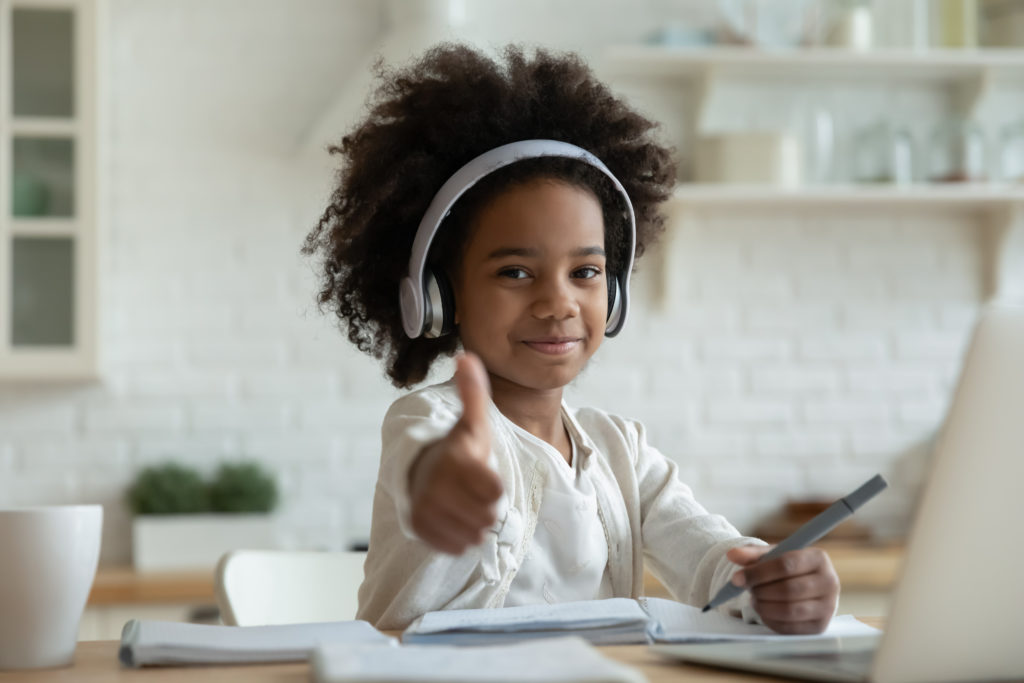Scientists agree: Physical activity is a central factor in children’s ability to learn. Exercise boosts mental performance and increases attention. Since children’s everyday (learning) lives are predominantly spent sitting at school and at their desks, it is important to ensure that there are enough breaks for movement and learning in motion in order to prevent learning frustration and a lack of concentration. Through movement units, our brain becomes efficient again and our ability to concentrate is increased.
| Exercising prevents reluctance to study |
In addition to academic difficulties, students’ constant “sitting on pins and needles” and being “easily distracted” is another obstacle to the learning results they seek. Exams and tests are a challenge in everyday life for many children and parents. Yet learning and exercise can be easily combined! The persistent reluctance to study can be transformed into concentration and attentiveness through movement breaks and learning in motion:
| “Running dictation”: Words to be memorized or text passages are written on small pieces of paper and attached to furniture and objects in the living room as well as in the garden or on the balcony. The child looks for each piece of paper, memorizes the words and sentences, and writes them down in his or her notebook on the desk. Math problems or vocabulary items are also suitable for this exercise. Providing alternative workstations: Simply replace the desk chair with a bean ball or move a workstation to another elevated surface so that work can be done while standing. 1,2 or 3: Signs with the numbers 1,2 and 3 are distributed in different places with plenty of space in between. Mom or Dad asks the child a question and gives three possible answers. The child races to the correct answer. Calculations in the garden: Various task slips are distributed in the garden. The child calculates a different task at each place (deck chair, flower bed, swing). “Multiplication ball”: Parents and children take turns tossing a ball to each other. When throwing, a multiplication task is given, when catching, the solution must be stated. |
Exercise breaks
Breaks after school, when doing homework, and when studying are crucial to a successful learning process. In addition to rest, breaks should also be used for physical activity. After all, exercise not only grows muscles and stamina, but also neuronal connections that we need to learn new things. During movement breaks, children have the chance to regain energy for concentration phases and thus restart the thinking process. Another positive effect is that children retain the joy that comes with learning through regular breaks and find a good balance between regular phases of concentration and letting off steam. They are not easily overwhelmed by difficult math problems or countless vocabulary items, but learn to divide up the material and reach their learning goal bit by bit.
| A good way to provide regular exercise breaks for students is to introduce an “exercise recipe book” during exercise breaks. For this purpose, athletic exercises (from books or the internet) are taken down in a notebook and performed together before or after study sessions as well as during breaks. |
- Juggling with two (or three) objects
- Hopping up and down the stairs with both legs as fast as possible
- Freezing in the push-up position for 30 seconds
- One-minute downhill squat against the wall
- Circling on your stomach with one hand, tapping your head with the other hand, then alternating
- Doing 30 jumping jacks
- Doing a shoulder stand for 20 seconds
- Doing a handstand against the wall
- Balancing different objects on your head
There are no limits to your creativity. A good way to stick to the breaks is to set an alarm or hourglass: 30 minutes of studying, a 10-minute break for exercise, studying for 30 minutes, and so on. This way, the learning material is clearly divided into small sections, preventing lapses in concentration and fatigue.
Winding down
Another key influence on the willingness to learn and on stress management before exam situations is the aspect of relaxation. If children are too stressed, they experience exhaustion, headaches, fatigue, poor concentration, and bad moods. In other words, conditions under which successful learning processes seem impossible. Parents can counteract the students’ state of constant tension with targeted relaxation exercises and phases of unwinding, preventing the whole family from being affected by the pressure to study:
| Family time out on the weekend: Joint trips to the countryside or a day at the water park can be a great way to de-stress for the whole family. Meditation: There are many valuable videos on the Internet on guided meditation that can be explored together. Attending children’s yoga or relaxation classes together can also be helpful. Progressive muscle relaxation: In this exercise, individual muscle parts are first tensed and then systematically relaxed. There are numerous “progressive muscle relaxation stories” on the internet that can be read aloud by an adult. A cozy atmosphere and quiet music are also helpful. Guided imaginary journey: Children lie on their backs and close their eyes (if possible). The parents tell the children a story, which they can visualize and experience. There are no limits to the imagination. Alternating between letting the children tell or invent the story can also be beneficial. |
In summary, everyday life with children should be balanced and varied, and the children should have a say. This also gives the children responsibility in regard to their own learning success. In this way, tensions between school and free time can be resolved, and learning successes can be celebrated on a regular basis.

